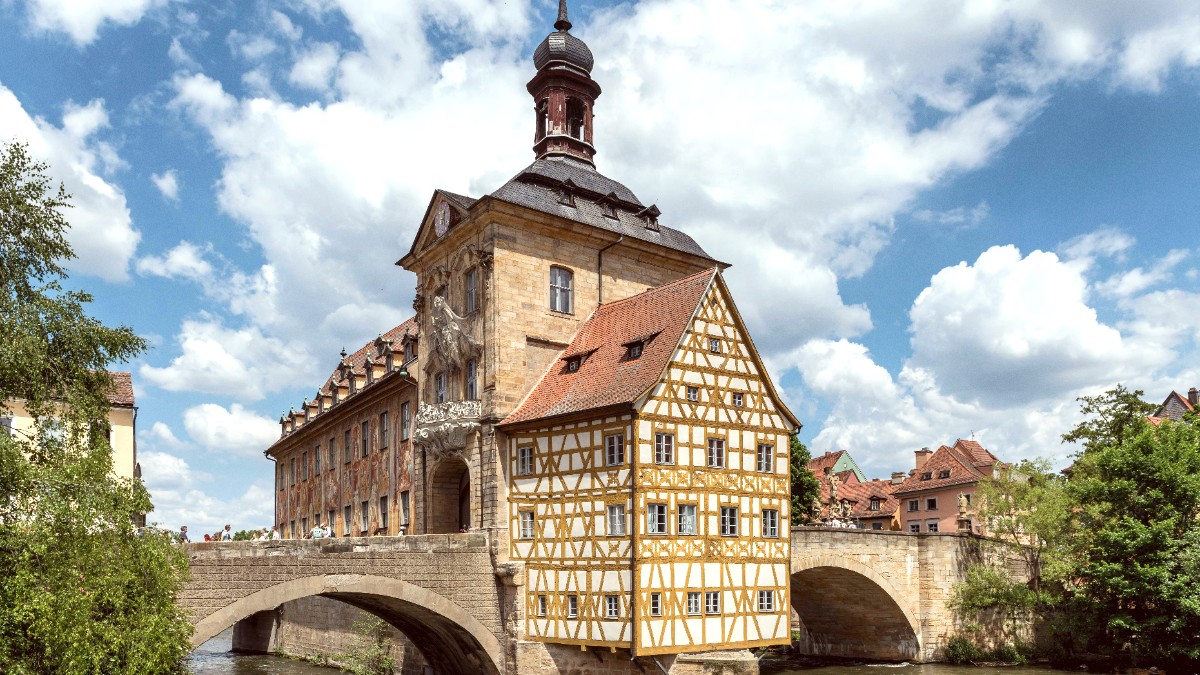
Bavaria, Germany
Discover the charm of a place shaped by emperors and bishops, a city built on seven hills like Rome. From its imperial cathedral to the whimsical beauty of the Old Town Hall perched in the river's flow, Bamberg promises charming scenery for your travels. Explore its narrow alleys, savor its world-renowned smoked beer, and immerse yourself in a culture that values tradition and quality. Your travel to the heart of Franconia begins here, a distinct blend of historical richness, cultural depth, and warm Bavarian hospitality.
The Regnitz river flows through the city, creating its characteristic riverine landscape. The Main-Danube Canal connects the Main and Danube rivers, establishing a continuous navigable waterway.
This strategic position on water routes significantly contributed to Bamberg's historical status as a trading hub and a center for transport.
Bamberg’s history spans over a millennium, with its first documented mention dating back to 902 AD. Its true prominence began in 1007 AD when Emperor Henry II established a new bishopric here. His vision was to create a "second Rome," a powerful center for the Holy Roman Empire and a symbol of Christian faith and scholarship.
The 17th and 18th centuries saw Bamberg transformed by the Baroque and Rococo styles. Its Old Town, with structures dating from the 11th to 18th centuries, led to its designation as an UNESCO World Heritage site in 1993.
First documented mention of Bamberg.
Emperor Henry II establishes a new bishopric.
Bamberg becomes an important intellectual and trading hub.
Baroque and Rococo architectural styles transform the city.
Bamberg's Old Town designated an UNESCO World Heritage site.
The city's brewing tradition, dating back centuries, forms a part of its historical identity. Its unique Rauchbier (smoked beer) links directly to this ancient craft.
Bamberg served as a significant center for arts, philosophy, and especially brewing, reflecting a culture valuing tradition and quality.
Despite damage during the Thirty Years' War, Bamberg preserved much of its urban fabric, a testament to its enduring character.
Its unique blend of history, architecture, and spiritual heritage earned Bamberg the nickname 'Rome of Franconia'.
A quick look at Bamberg's features offers a concise overview of what makes this Bavarian city a captivating destination.
The Old Town, an UNESCO World Heritage Site, protects its well-preserved medieval and Baroque city center.
World-renowned for its distinct smoked beer brewing tradition, a must-try cultural experience.
Tourism, brewing, administration, and university education shape its lively environment.
Bamberg is built on seven prominent hills, like Rome, offering varied perspectives and shaping the city's appearance.
Population: Approximately 79,000 residents (2023).
Area: 54.6 square kilometers (21.1 sq mi), compact and ideal for walking exploration.